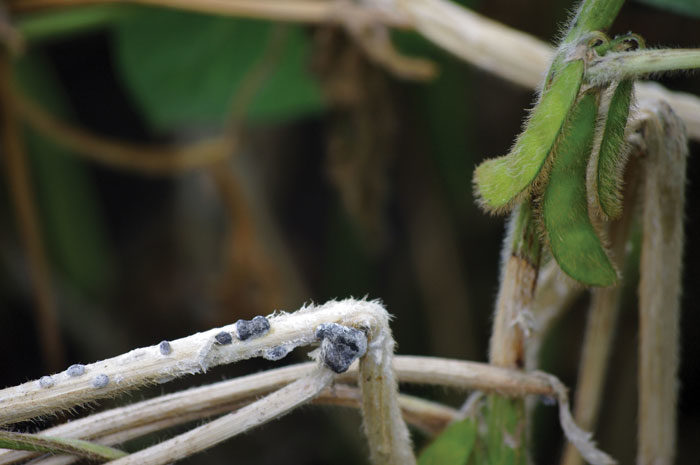No-Till Farmer
Get full access NOW to the most comprehensive, powerful and easy-to-use online resource for no-tillage practices. Just one good idea will pay for your subscription hundreds of times over.

MOLD DAMAGE. White mold causes significant stalk damage to developing soybean plants beneath the canopy. Photo by: Michael Wunsch
THERE’S AN OLD SAYING warning against betting on any proposition with more than one “if” in it, and when soybean producers face seasons with wet, cool conditions during flowering, they face control issues for white mold that present many “ifs.”
North Dakota State University researcher Michael Wunsch has spent years seeking ways to help growers reduce the variables in controlling white mold, a disease that can significantly lower soybean yields through crop-weight reduction and seed loss.
“White mold needs two things for development: cool, wet conditions and dead blossoms as a target for infection,” Wunsch says.
The Sclerotinia sclerotiorum fungus produces hard, black resting structures called sclerotia that are deposited in the soil behind infected crops and persist for many years. When sclerotia are within the top 1-1.5 inches of soil with sufficient moisture, they germinate to form mushroom-like structures called apothecia.
“Spores released from apothecia infect senesced soybean blossoms when it is cool and moist,” Wunsch says. “Once the pathogen colonizes in dead tissue, it invades adjacent living tissue, causing white mold.”
Wunsch says when daytime highs reach the low to mid 70s F, heavy dew and relatively high humidity are sufficient to allow spores to infect and cause disease. As the mercury climbs into the 80s, recurrent rainfall or overhead irrigation are generally needed to cause significant infection. When daytime temperatures reach the 90s, white mold is much less likely to develop, regardless of field history.
But moist, cool field conditions provide only a couple of…